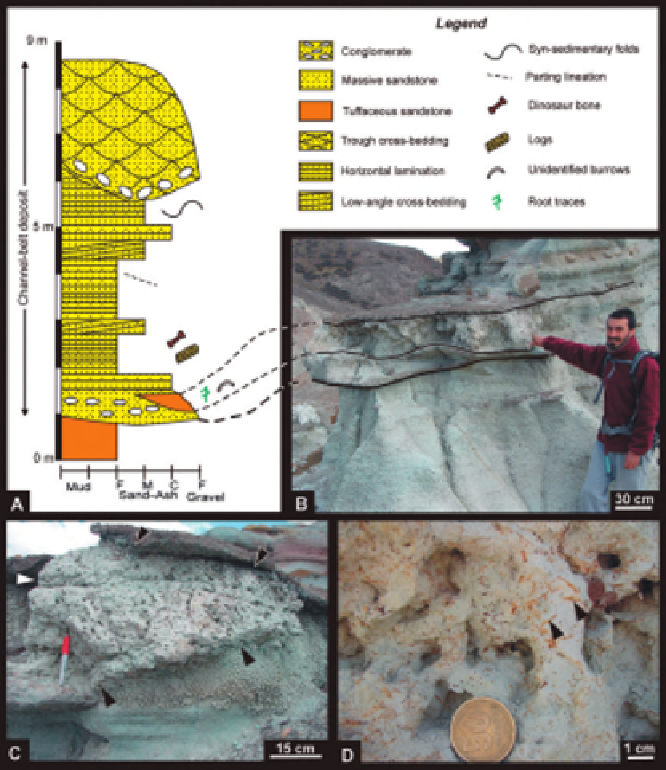Environmental Engineering Reference
In-Depth Information
FIGURE 10
Example of pedogenic features within a channel-belt deposit of the Late Cretaceous
Bajo Barreal Formation, Chubut province, Argentina. (A) Log of the 7.5-m-thick channel-belt
deposit. The lower part of the channel belt contains a lenticular intercalation of fine-grained tuff-
aceous sandstone with a highly bioturbated ichnofabric. (B) The lower part of the channel-belt
deposit and correlation of the lower bounding surface of the channel (thick line) and bounding sur-
faces of the bioturbated interval (thin lines) with the log of figure A. (C) Detail of the highly bio-
turbated interval showing the transition to the underlying gravelly sandstone and of the sharp contact
with the overlying coarse-grained sandstone (black arrows). Note the relict primary lamination
(white arrow). (D) Rhizoliths (some arrowed) in a close-up of the bioturbated interval.
1996
). The example described by
Melchor (2009)
from the Neogene R´o Negro
Formation of Argentina is composed of a moderate density of bird tracks on the
bounding surface of a 3-m-thick coset of trough cross-bedded sandstone com-
posing a channel-belt deposit. These tracks indicate a cessation in water dis-
charge of the river, ponds in the dry channel, and settling of fine-grained
sediments, which was the focus of foraging activities by shorebirds.







Search WWH ::

Custom Search